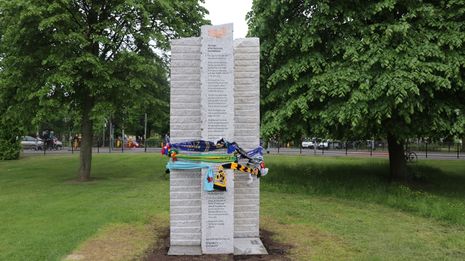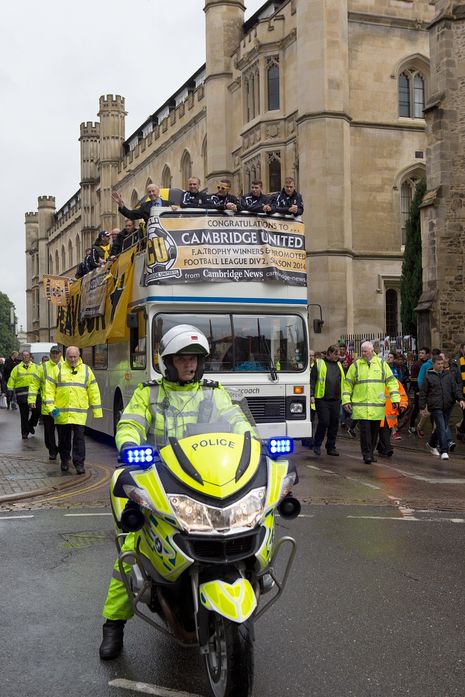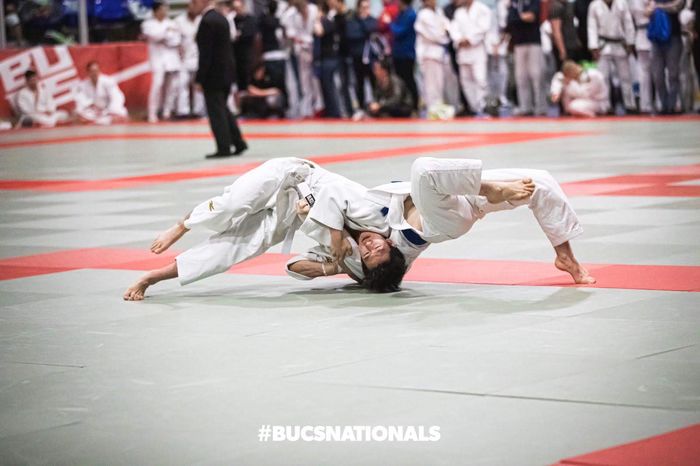The History of Football in Cambridge
Local sports historian Nigel Fenner talks to Finn Ranson about Cambridge’s fabled relationship with the beautiful game.

All Cambridge has to show for its major role in the creation of football is an unassuming monument on the corner of Parker’s Piece erected two years ago. You have probably missed it: four greyish columns packed together, each densely inscribed with the ‘Cambridge Rules’ in languages from across the globe. The original slab, made out of granite from a quarry next to FC Porto’s Estádio do Dragão, was divided into nine pieces, with the other five installed in Shanghai, Mombasa, Cairo and Chennai. Such is football’s inexorable global appeal.
“It’s about how those rules translated,” designer Alan Ward told me when the monument was unveiled. “It’s about how this one universal language – football – can be such a tool for communication.”
“...the University would be at the heart of the decisive evolution of the sport...”
It defies belief that a small coterie of Etonians at the University of Cambridge drew up the first unified rules that made this global language as we know it. In 1848, they pinned eleven rules to a tree on Parker’s Piece, and that was that.
But Cambridge’s love-hate relationship with the beautiful game stretches back much further.
Nigel Fenner ran a series of football tours around the city in January. He is currently writing a history of sport in Cambridge, told in the form of a walking tour with his great-great-uncle who founded Fenner’s cricket ground.
By his reckoning, the first record of football in Cambridgeshire is found in a fourteenth-century poem written by a Benedictine monk in Ely. “He writes about the joys of the ploughman working and then playing,” Fenner says. “Unfortunately, it coincided with the bishop banning football. You did not want the clergy getting up to these activities.”
Of course, football was a very different sport in the Middle Ages, by nature and by name. In East Anglia, there are frequent references to a sport called ‘camp-ball’, a mixture of football and handball played in ‘camping closes’, field land owned by local parish churches. In 1474, Dr. John Botwright, the local rector of Swaffham and Master of Corpus Christi College, gave up land next to his church for parishioners to play, as he put it, “their honest games”.
“CUAFC were tactical trailblazers in the later nineteenth century, as they played more competitive matches on Parker’s Piece.”
There are 150 known sites such as this in East Anglia. Though football was a violent game, the clergy and landed gentry clearly regulated and endorsed this early iteration. “I think it’s unfairly characterised in the history books now as village against village on Shrove Tuesday knocking ten bells out of each other,” Fenner said. “It was organised, in East Anglia, for the most part.”
Before 1848, football rules had been around for centuries. Francis Willughby’s (sometimes spelt Willoughby) ‘The Book of Games’, for instance, published in 1660, includes a particularly detailed account and shares some similarities with the Cambridge Rules. It stipulated that players were not allowed to kick opponents’ shins above the height of the ball, but were allowed to trip. One dreads to think how prolific Sergio Ramos could have been.
Not that the University itself wholly encouraged football. In 1579, a town v gown game in Chesterton descended into a violent brawl. The local constable facilitated the violence by making sure that the members of the town hid sticks and staves in the nearby church porch. Students were attacked at the end of play, and those that could made a hasty escape by swimming across the river Cam.

The Vice-Chancellor decreed that football would not be played outside of College grounds. Successive bans followed, as the University feared that football would get in the way of academic study.
Nonetheless, the University would be at the heart of the decisive evolution of the sport, when the idea of a set of compromised rules came into being at Trinity College in the late 1830s.
By this point, the sport was freely played amongst students. Dr G.E. Corrie, the Master of Jesus College, which made its own drive in the mid-nineteenth century to promote football and other sports, noted “forty gownsmen” playing football on Parker’s Piece in 1838, which had since become a hive of sporting activity at the heart of the town. The problem was that these students came from eight private schools that each had their own unique set of rules.
“Cambridge might no longer be supplying dozens of England internationals, but its legacy is assured.”
“They would be playing a game of football dictated by the confines and restrictions they had geographically,” Fenner explained. “So Charterhouse was in the centre of London and had to play in narrow cloisters, whereas the Eton field game was very much open.”
Between 1838 and 1863, there were five different agreed sets of rules, principally driven by students from Eton, which had a particular football bias and wanted to move away from the new vogue for rugby. 17 of the 25 signatories of the Cambridge Rules were from Trinity, and the decisive meeting in 1848 was held at the College. It apparently lasted for eight hours.
Unfortunately, there is no written evidence of the 1848 rules. Those we have are from 1856, but they make fascinating reading.
“You can catch the ball but you’re not allowed to run with it,” Fenner says, referring to rule number eight. “It’s a bit like ‘taking a mark’ in today’s modern-day Gaelic football or Australian Rules (another Cambridge ‘invention’)”.
All the same, Eton wanted to minimise handling in defiance of the rugby fraternity.
“When Eton were trying to encourage others to stop the handling, they would give a sixpence for them to hold in their hand. If they had it at the end of the game then they got to keep it.”
In all, there are just 11 rules on the 1856 document. There are no sub-clauses, no fifth officials, no unnatural positions or clear and obvious errors. Simpler times.
And rule number one? ‘This club shall be called the University Foot Ball Club’. Sheffield F.C., founded in 1857, has long claimed to be the oldest football club in the world. Loathe as I am to admit it – I live just five minutes from Sheffield F.C.’s ground – it is clear that the University’s football club is at least a year older, perhaps nine years if these rules are true to the 1848 laws.
CUAFC were tactical trailblazers in the later nineteenth century, as they played more competitive matches on Parker’s Piece. “Without conventional offside it was very much an individual game,” Nigel said. “You just got the ball and went for goal. Cambridge developed what they called a combination approach. Though they never won the FA Cup, they were ahead of the game.”
But every team has its day. By the 1890s, Cambridge’s fresh tactical ideas had grown stale, left behind by clubs involved in the new English Football League. “There was one game against Aston Villa reserves and it was very apparent that they were off the pace. The game amongst the working class was now beginning to overtake and it was reported by the press as an embarrassment.”
Cambridge might no longer be supplying dozens of England internationals, but its legacy is assured. Thanks to the Cambridge Rules, football’s complex story in communities around the world goes on.
You can find out more about Nigel's company, Cambridge Sports Tours, at www.cambridgesportstours.co.uk
 News / SU stops offering student discounts8 January 2026
News / SU stops offering student discounts8 January 2026 News / Uni-linked firms rank among Cambridgeshire’s largest7 January 2026
News / Uni-linked firms rank among Cambridgeshire’s largest7 January 2026 Comment / Plastic pubs: the problem with Cambridge alehouses 5 January 2026
Comment / Plastic pubs: the problem with Cambridge alehouses 5 January 2026 News / New movement ‘Cambridge is Chopped’ launched to fight against hate crime7 January 2026
News / New movement ‘Cambridge is Chopped’ launched to fight against hate crime7 January 2026 Comment / What happened to men at Cambridge?31 December 2025
Comment / What happened to men at Cambridge?31 December 2025









